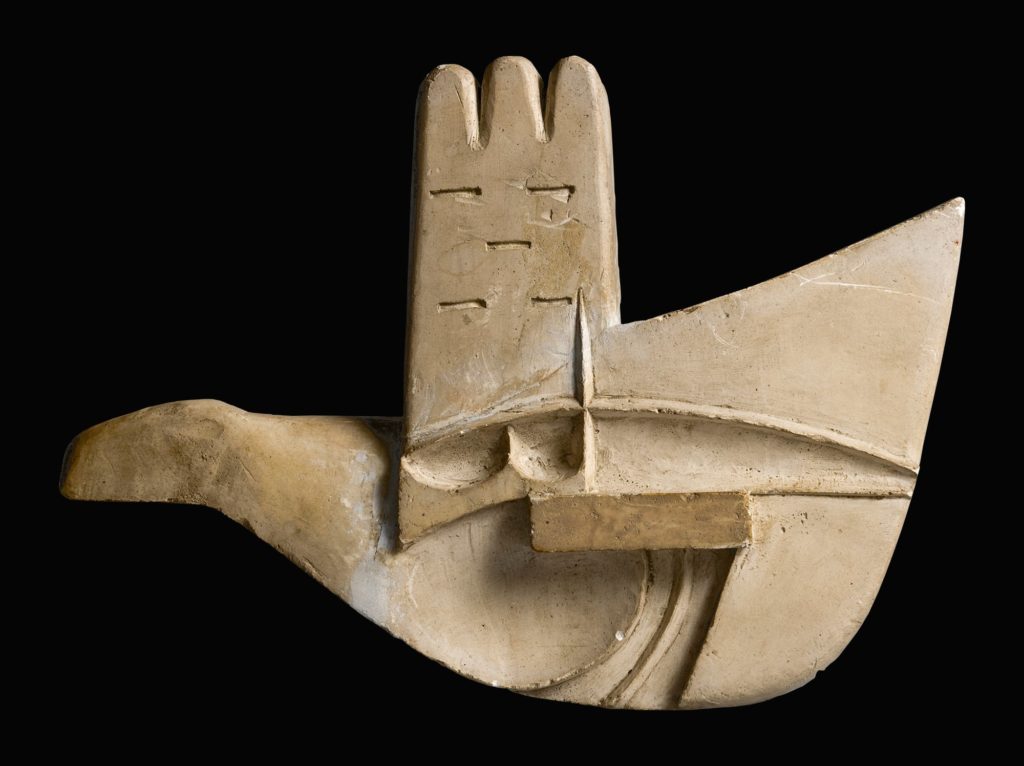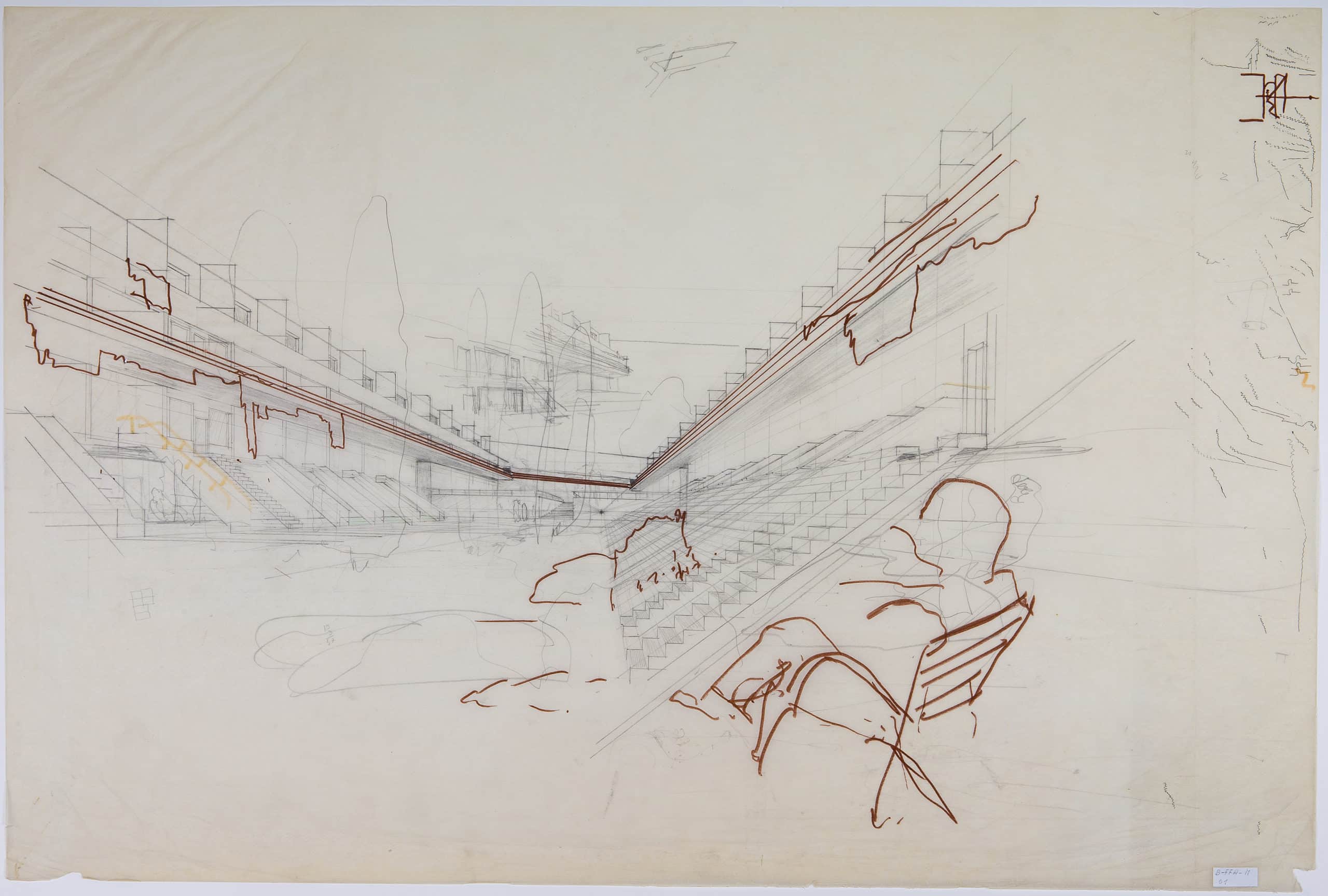This Was Tomorrow: Reinventing Architecture 1953–1978
– Markus Lähteenmäki, Manuel Montenegro and Nicholas Olsberg

This Was Tomorrow: Reinventing Architecture 1953–1978 is an exhibition about architectural imagination and the power, processes and poetics of creation and invention. It presents a series of twelve episodes – beginning in the 1950s – that look at the ferment of new ideas as architects began to reconceive space in response to the conditions of a newly affluent society and the emergence of the electronic age. They are Le Corbusier, John Hejduk, Stirling and Gowan, Buckminster Fuller, Michael Webb, Walter Pichler and Hans Hollein, Constant, Ugo La Pietra, Superstudio, Álvaro Siza, Louis Kahn and Aldo Rossi.

Selected from the Drawing Matter collection, each of these investigations looks into the basic elements, open futures and varied possibilities of architectural thinking, proposing fundamental new ideas and examining the potentials of the built environment in reforming the relations of human beings to each other and to their environments.

As the pragmatic demands of post-war reconstruction dissolved, a new generation of designers, coming of age in the post-war years and often drawing on nascent movements in art and social thinking, suggested radical departures from the prevailing functional consensus. Looking at the architectural sketch and drawing as the essential vehicle for conceiving, evolving and communicating such new ideas, the exhibition focuses on examples of the great variety of reinvention and experimentation born of that creative context, ranging from the audacious and satirical to the monumental and rational.


The architects, artists and practices in the exhibition are members of the last generation to draw on paper, working without digital aids. Their ambition as innovators in a changing culture brought them face to face with the limitations and opportunities of the rapidly expanding modes and techniques of representation that were available to them.


The investigations in the exhibition range from Modern masters, compelled to reconsider their own practices, to protagonists of the following generation, who question inherited orthodoxies. From attempts to redefine architecture within its limits as the art of building, to those that question and expand these very limits, executed in a variety of media and aiming at an even greater variety of manifestations. Many stretch the boundaries of the discipline into new terrain, engaging architecture in the wider debates and inquiries of their day and reminding us of the fundamental place the architectural imagination and its expressions hold in the culture as a whole. All of the investigations share a concern to aim beyond the machine and past the functional, towards the emotional, towards experience, and towards the poetics, rather than the necessities of the everyday.





They also mark a departure from the dream of the pre-war Modernists, in which architects and architecture were the somewhat paternalistic instruments of change in society. The new paradigm instead proposes architecture that provokes critical discussion, which can create its own worlds within, and which, by acting as a backdrop and landscape for change whether material or philosophical could embrace or challenge it.



This Was Tomorrow: Reinventing Architecture 1953–1978, SAM – Schweizerisches Architekturmuseum, Basel, Switzerland, 13th May – 08 April 2016. Curated by Markus Lähteenmäki, Manuel Montenegro & Nicholas Olsberg. Exhibition page.

– Tom Graham